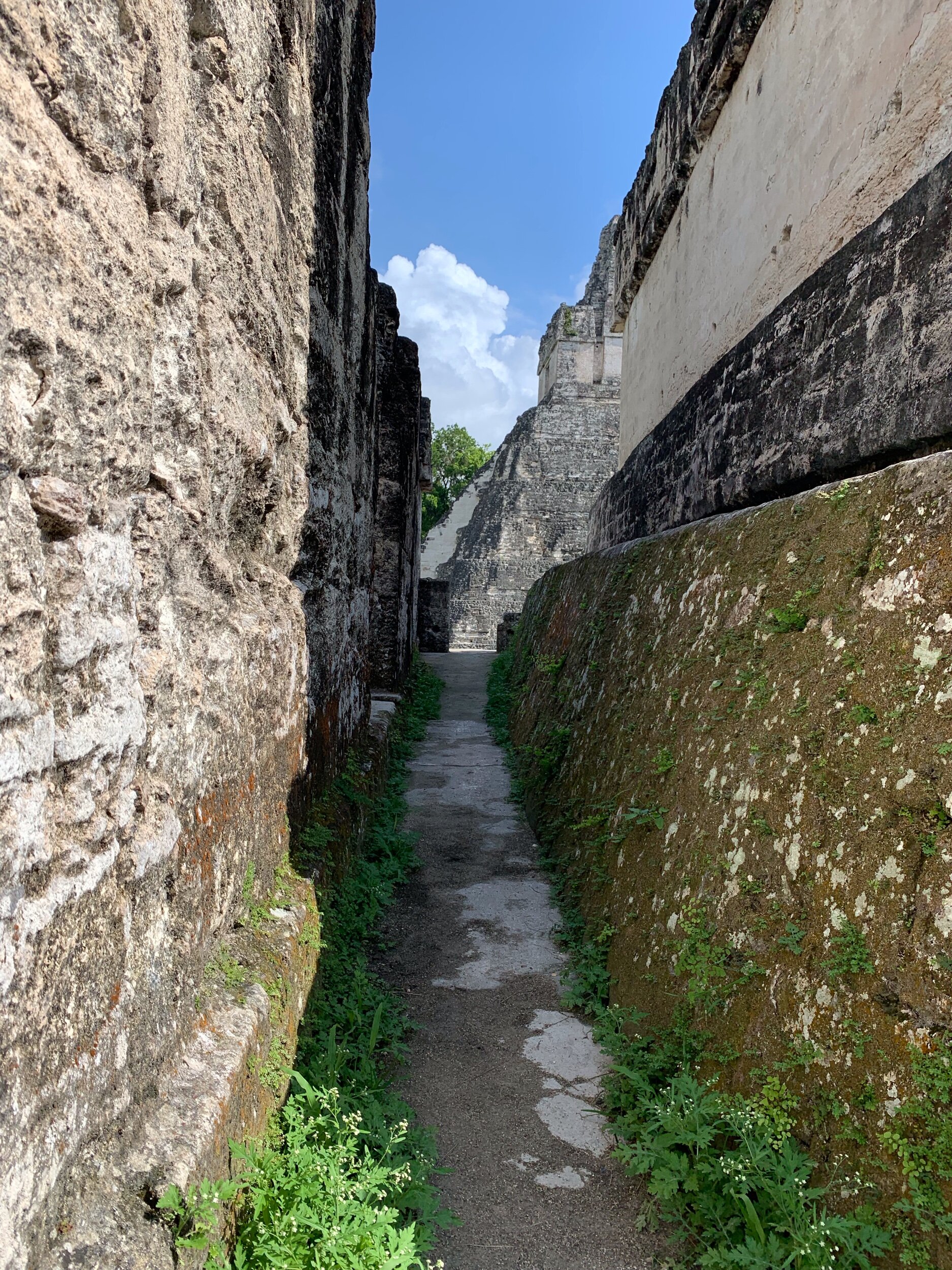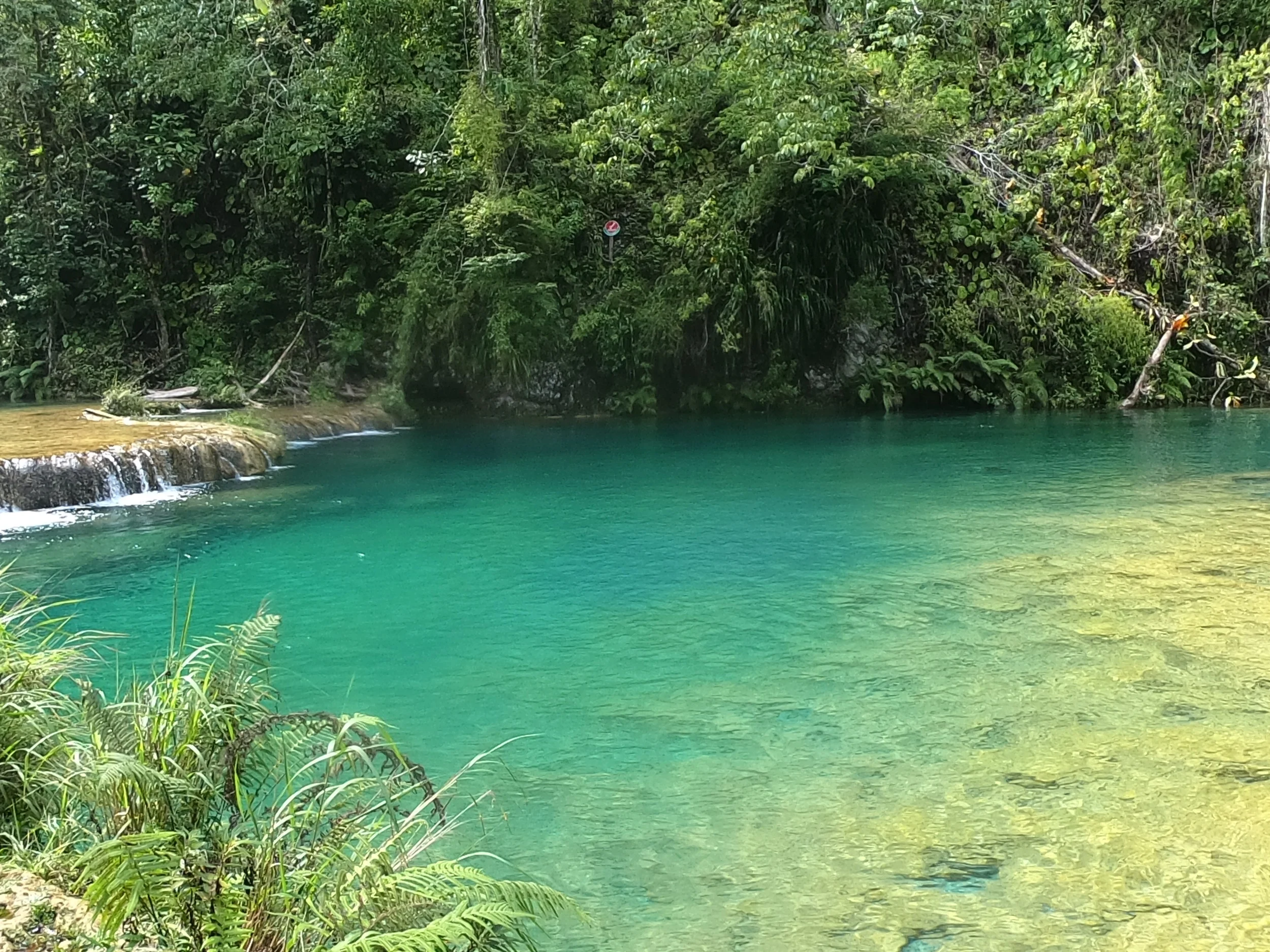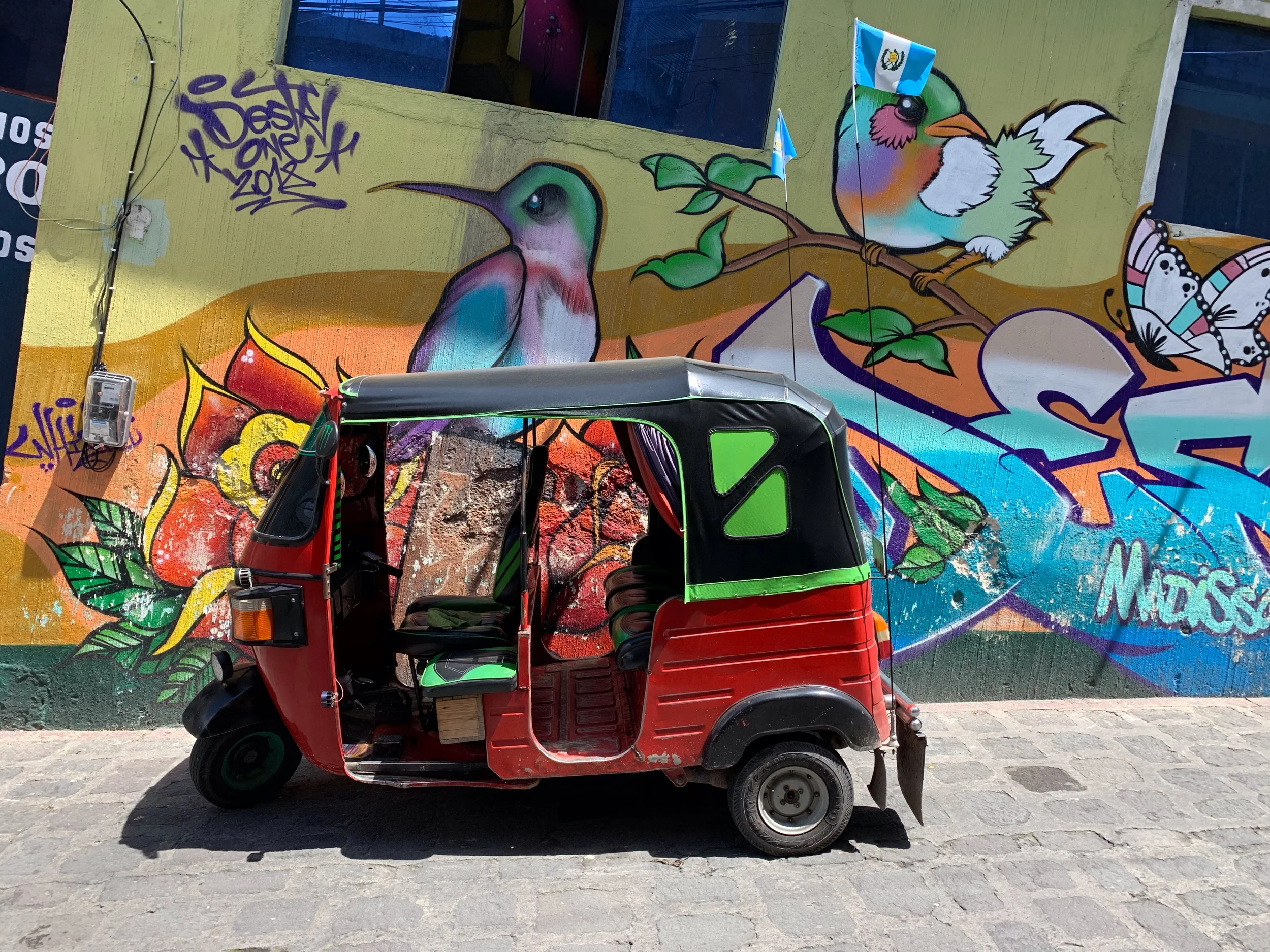Tikal
It’s impossible to miss the five temples of Tikal that tower above the tallest trees in the rainforest. But it is easy to miss the 50,000 and counting structures that are buried below the earth. These ancient Mayan ruins were once home to hundreds of thousands of people from 200 - 900 AD. Historians and archeologists believe that the people of Tikal were forced to leave the city that they created after depleting the rainforest of its resources. Nowadays, the rainforest has taken over most of the ancient city. Only four archeologists, all from Guatemala, work at Tikal and are selective in deciding what ruins are uncovered. The people of Guatemala understand the importance of preserving the natural landscape that is home to jaguars, monkeys, toucans and more.
Merritt and I are standing on an ancient ruin, the astronomical lookout, where you can see all five temples in Tikal, three of which are pictured behind us.
Despite the beautiful, massive structures that stick up from the earth, much of Tikal looks like this. Unassuming mounds with ruins buried beneath the lush rainforest are everywhere.
Tikal means City of Voices. When standing between Temple One and Temple Two, simply clap your hands and you’ll hear the sound of the national bird, the quetzal. And it’s no coincidence. Mayan engineers and astronomers worked together to determine the precise position of the temples. During the solstices and equinoxes, you can appreciate the shadows of the temples that point to other significant landmarks or create unique shadows, such as that of a snake. They used these cues to determine when to plant and harvest their crops as well.
Despite only a fraction of Tikal being unearthed, you could spend days wandering around the ruins. Many of these can be accessed by foot in order to get a closer look at the astounding structures.
It is possible to climb many of the ruins in Tikal. This staircase led to several rooms with an fabulous view of the Main Plaza.
Me standing in front of Temple One in the Main Plaza.
Temple One with living quarters in the background.
Merritt with the Main Plaza as the backdrop.
Walking through the actual living quarters was a favorite of ours. It was fascinating to imagine living here 1,200 years ago. Of utmost appreciation was the curved roofing structures made of limestone. The Mayans were mathematicians and architects that understood stress and strain principles. They designed living quarters with airflow in mind for the hot and humid summer days.
Though it was possible to imagine what it might have been like to live in Tikal, it was nearly impossible to imagine some of the traditions of the Mayans, including human sacrifice. Round stone structures accompanied by headstones can be found at every turn. Each one represents a king or other powerful figure that was sacrificed to the gods. Historians believe that sport was used to determine who would be sacrificed, with the winning team capturing the honor. After being given mushrooms with hallucinogenic effects, a person was laid on the round stone and their heart was extracted from the body while it was still beating.
Hundreds of headstones are present thought out the park where human sacrifices were performed.
Though Tikal doesn’t have the most exposed ancient ruins, we greatly appreciated the variety that were were able to experience there. Wildlife was everywhere and we were able to see monkeys swinging through the tallest trees of the rainforest. The ability to climb the ruins gave unique perspectives of the ancient city and the landscape.





















